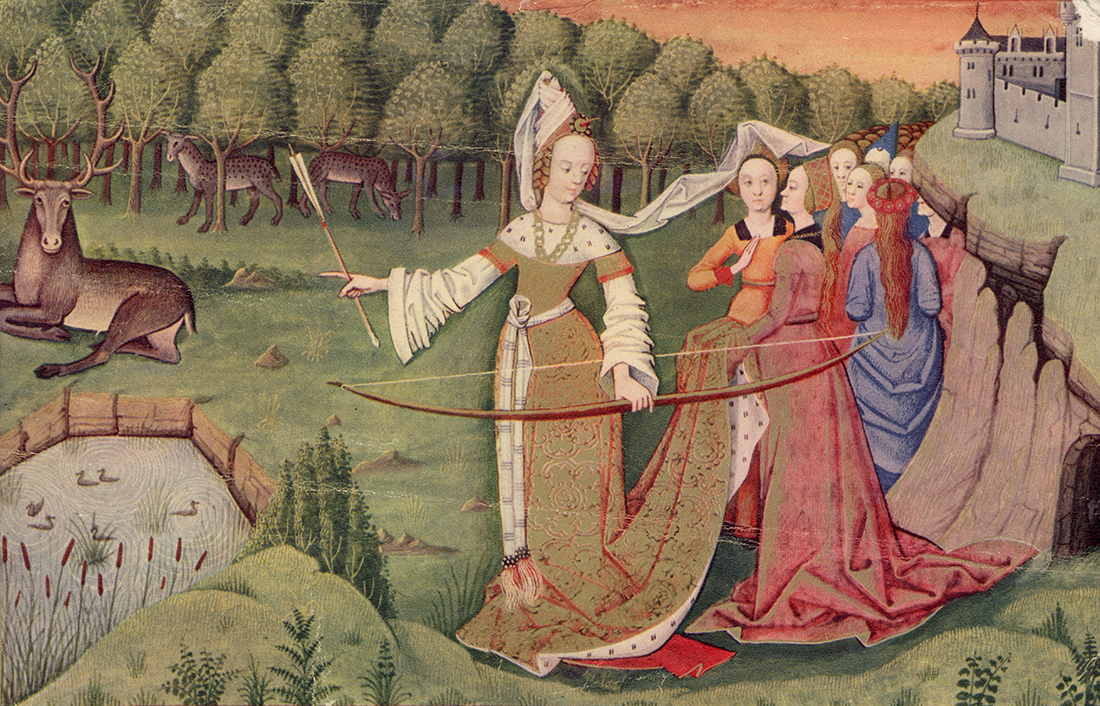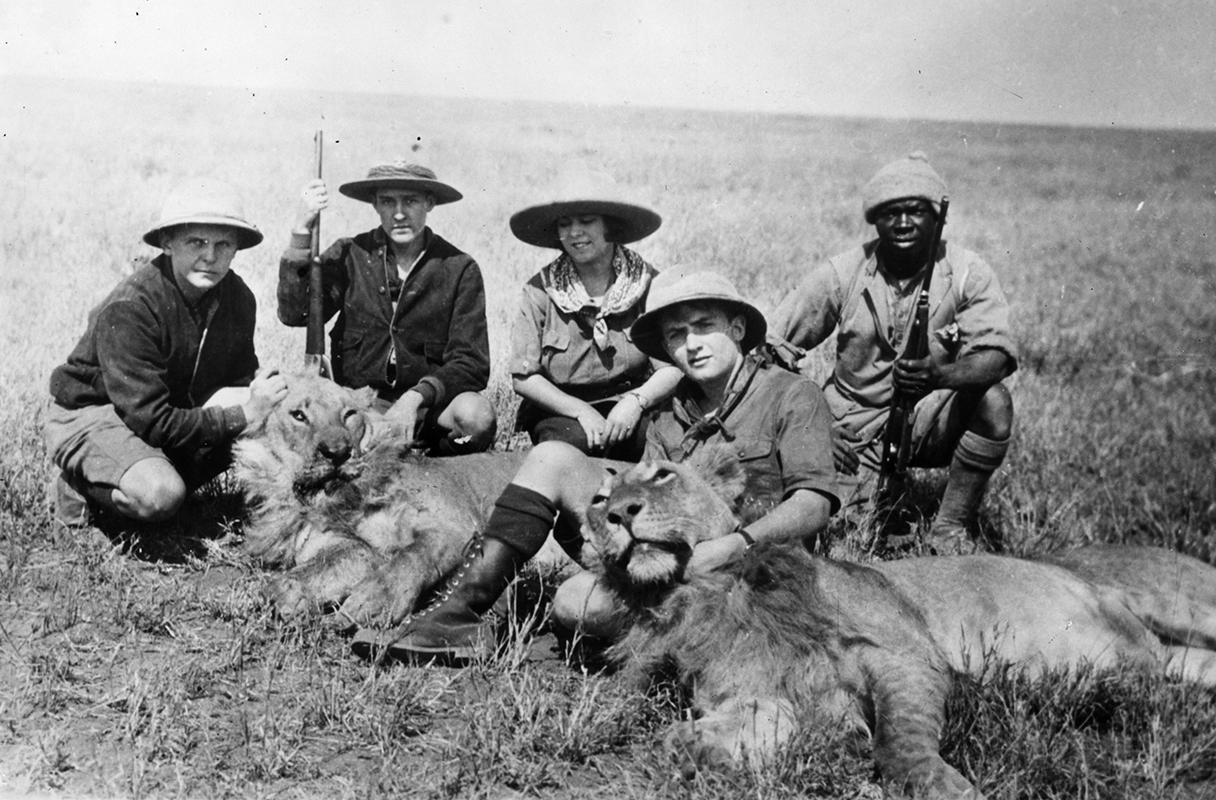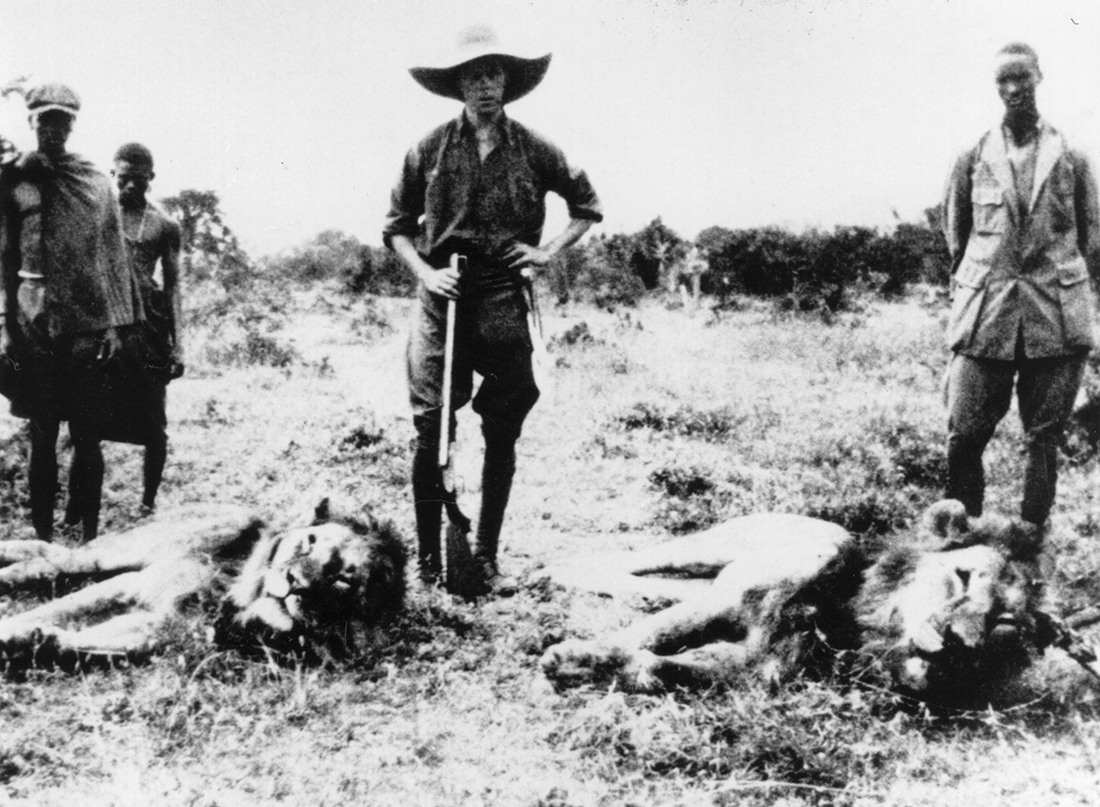Review Games for to Kill a Mockingbird Chapter 24-31
Hunting Large Game: Why People Kill Animals for Fun

"The big beast stood similar an uncouth statue, his hide black in the sunlight; he seemed what he was, a monster surviving over from the world's by, from the days when the beasts of the prime number ran anarchism in their strength, before homo grew and then cunning of brain and hand every bit to chief them."
Theodore Roosevelt, quondam U.S. president and renowned large-game hunter, waxed poetic about a massive bull rhinoceros in his 1910 book, "African Game Trails: An Business relationship of the African Wanderings of an American Hunter-Naturalist," subsequently glimpsing the rhino during a safari in British Eastward Africa and the Belgian Congo earlier that yr. [In Photos: A Museum Honors Teddy Roosevelt]
What happened next? Roosevelt shot the beast.
He fired with his gun's right barrel, "the bullet going through both lungs," and and so with the left, "the bullet entering between the cervix and shoulder and piercing his heart," Roosevelt wrote. A tertiary volley from another fellow member of the hunting party brought downwards the keen animal, "just xiii paces from where nosotros stood," according to Roosevelt.
A black-and-white image of the backwash shows Roosevelt in what was a common pose for him: continuing alongside the lifeless trunk of a creature that he had hunted and killed. [In Photos: Endangered and Threatened Wild animals]
More than 100 years later, thousands of people each yr still visit wild spaces across Africa with guns in paw. They utilize for permits to recreationally chase big animals, many of which — leopards, lions and elephants, to name simply a few — represent threatened or endangered species.
And the "sport" is not without risks for homo hunters — on May xix, a hunter in Zimbabwe was crushed to decease by an elephant after the brute was shot by another member of his hunting party. And so what motivates people to hunt these animals for pleasure, and to proudly display the bodies or body parts of their prey as precious trophies?
Power play
The slaughtering of large, unsafe animals as a spectacle dates back thousands of years, with records from the Assyrian empire (about 4,000 years agone to around 600 B.C.) describing kings that boasted of killing elephants, ibex, ostriches, wild bulls and lions, according to a study published in 2008 in the journal Bulletin of the American Schools of Oriental Research.
These hunts were carefully orchestrated and conducted for the entertainment of royalty and equally demonstrations of their strength, Linda Kalof, a professor of sociology at Michigan State University, told Live Science in an email.

"Ancient canned hunts were spectacular displays of royal ability and dominance, and always took place with the king'southward public watching from the sidelines," Kalof said. "A successful hunt requires the death of unrestrained wildlife — animals who are hostile, shun or set on humans, and are non submissive to human authority."
Even today, acquiring trophy animals is a way of displaying power, Kalof noted. In some African countries, where big-game hunting and bays display are expensive forms of amusement practiced predominantly by white men, hunting recalls ideologies that are deeply rooted in colonialism and patriarchy, Kalof said.
The loftier cost of hunting
And then at that place'southward the money involved. Legal hunting, which is conducted under the supervision of government agencies and official guides, involves expensive permits and is express to specific animal populations and only in certain areas. Illegal poaching, on the other hand, circumvents all regulations and targets animals regardless of their historic period, sexual practice, or endangered status.
The price tag attached to legal big-game hunting is considerable, once you tally up the costs of travel and lodging expenses, state-of-the-art equipment, local guides, and hunting permits. Government-sanctioned hunting is a booming enterprise in some African countries, with visiting hunters spending an estimated $200 million annually, The New York Times reported in 2015.
And when American dentist Walter Palmer notoriously shot a 13-twelvemonth-old lion named Cecil in Republic of zimbabwe in July 2015, he purportedly spent approximately $54,000 only on permits for the privilege.
In other words, people who chase recreationally — and share photos of their trophies — are dissemination that they can support lavish habits, biologist Chris Darimont, a Hakai-Raincoast Professor in the Department of Geography at the University of Victoria in British Columbia, told Live Science in an email.

In a study on contemporary trophy hunting behavior, published in March 2016 in the journal Biological science Letters, Darimont and his co-authors investigated whether evolutionary anthropology could provide answers well-nigh motives for recreational hunting. They suggested in their findings that men use hunting to transport signals about their fitness to rivals and potential mates, noting that even subsistence hunters (those who kill animals for food) targeted animals that were more challenging for them to catch, simply to allow others know that they could afford to take that gamble.
"The inference is that they have the concrete and mental characteristics that allow them to behave in a costly style and blot those costs," Darimont said.
And by sharing images of their trophies on social media, hunters can at present trumpet messages about their personal wealth and social condition to a global audience, he added. [Blackness Marketplace Horns: Images from a Rhino Bust]
Funding conservation
But at that place's yet another side to the recreational hunting story: Some hunters argue that the coin spent on their hobby is funding important conservation work. When hunters pay thousands of dollars to government agencies for the privilege of hunting certain types of wildlife in designated zones, portions of those costs can be invested in federal programs and community efforts to preserve animals living in protected areas – and even safeguard them against poaching, according to the World Broad Fund for Nature (WWF).
"In certain limited and rigorously controlled cases, including for threatened species, scientific evidence has shown that trophy hunting tin can be an effective conservation tool as part of a broad mix of strategies," the WWF states on its website.
Considering legal hunting provides local jobs and revenue, it can piece of work as a deterrent against poaching and helps to conserve ecosystems, professional person hunter Nathan Askew, owner of an American company that leads hunting safaris for "unsafe game" in S Africa, Tanzania, Botswana and Mozambique, explained in a Facebook mail service.
"The positive economic impact brought about past hunting incentivizes governments, landowners and companies to protect the animals and their habitats," Askew said.

Past demonstrating that wildlife has economic value, hunting can actively engage local communities in efforts to finish poachers and preserve wild spaces that might not otherwise be maintained for wildlife, a representative of the hunting organization Safari Club International (SCI), told Alive Science in an email.
Hunting under government supervision can also preserve the health of animal populations in the wild by weeding out individuals that are less fit. In Namibia, for instance, black rhinos are listed as critically endangered, with only v,000 individuals remaining in the wild. Yet the Namibian government maintains an almanac hunting quota of five postal service-breeding males, to stimulate population growth by allowing younger males to breed, the SCI representative explained. [A Crash of Rhinos: Come across All 5 Species]
"Non only does the black rhino hunting benefit rhinoceros population growth, information technology besides generates hundreds of thousands of dollars in revenue that past law has to be put toward rhino conservation in Namibia. Therefore, hunting provides a direct cash benefit to rhinoceros conservation that tourism can't provide," the representative said in a statement.
Conservation questions
However, contempo studies suggest that modern hunters may be overestimating their contributions to wildlife conservation. Non all countries that back up recreational hunting are transparent almost where that income goes, and it tin be uncertain how much — if any — is actually benefiting African communities or conservation efforts.
A report that the Democratic staff of the House Committee on Natural Resources (a congressional committee of the U.S. House of Representatives) issued in June 2016 suggested that income from hunting in African countries such every bit Republic of zimbabwe, Tanzania, South Africa and Namibia, from which the greatest number of hunting trophies are imported into the U.S., was not meeting conservation needs.
"In assessing the flow of trophy hunting revenue to conservation efforts, nosotros institute many troubling examples of funds either being diverted from their purpose or not being defended to conservation in the first place," the report's authors wrote.

Other experts have also questioned hunting'due south usefullness as a tool for conservation. In fact, when information technology comes to lions, "trophy hunting adds to the trouble," Jeff Flocken, Due north American manager for the International Fund for Animal Welfare, wrote in Baronial 2013, in an stance column for National Geographic.
Flocken argued that bays hunting weakens the African lion genetic pool considering the most desirable trophy kills are young, healthy males. Removing them from the population means that their DNA won't contribute to the adjacent generation of lions. Killing young males too destabilizes their prides, and can result in more lion casualties equally rival males compete to take their place, he wrote.
But perhaps most chiefly, he added, legalized recreational hunting derails conservation efforts by simply devaluing the lives of the hunted animals.
"It'south a message that won't exist heard as long equally information technology is mutual and legal to kill lions for sport," Flocken said in the article. "Why should anyone spend coin to protect an animal that a wealthy American can then pay to go kill?"
Original article on Live Science .
Source: https://www.livescience.com/59229-why-hunt-for-sport.html

0 Response to "Review Games for to Kill a Mockingbird Chapter 24-31"
Post a Comment